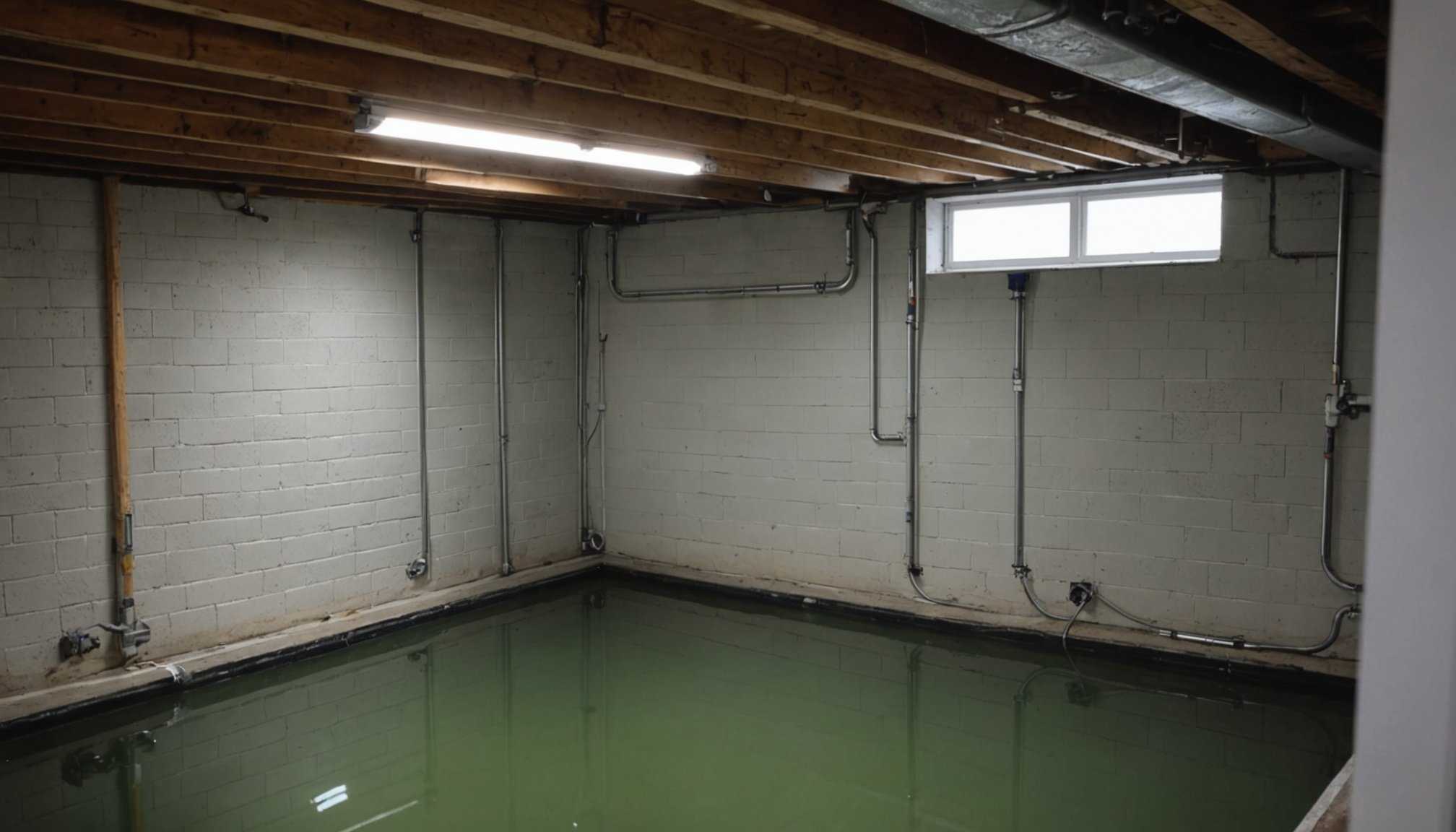Understanding the intricate details of basement waterproofing can be a daunting task. Yet, if ignored, water may seep into your basement, leading to damp walls, a weakened house foundation, and escalating repair costs. This article is your comprehensive guide to the best ways to waterproof a basement in a UK home. Dive into the world of drainage systems, membranes, tanking, and much more.
Understanding the Need for Basement Waterproofing
Before we delve into waterproofing methods, let’s take a moment to understand why this process is vital for your house. Basements, being the lowest part of a home, are prone to retaining water. In the UK, the damp climate can lead to an accumulation of water around the house’s foundation. Over time, this water can seep through the walls of the basement, creating damp conditions and weakening the building’s structure.
Topic to read : Top bathroom renovation tips in bromley for stunning makeovers
Waterproofing is an effective way to keep water at bay and protect your basement from potential damage. Not only does it preserve the structural integrity of the home, but it also adds to the property value. It helps to prevent the growth of mould and mildew, making the basement a healthier and more comfortable living space.
Waterproofing Methods
There is a myriad of waterproofing methods that you can employ. The best method for your home will depend on various factors, including the design and build of your home, the level of dampness, and your budget.
Topic to read : Maximize natural light with fixed rooflights
Tanking
One of the most common methods of basement waterproofing is tanking, where a waterproof cement-based solution is applied to the interior walls of the basement. This creates a ‘tank’ that keeps water out of the walls, hence the name.
Tanking is most effective when applied during the construction of the house. However, it can also be done as a retrofit measure, although this can be more challenging and costly. It’s important to note that tanking may not be suitable for homes with severe water pressure, as the build-up can cause the tanking solution to peel off.
Drainage Systems
Another popular waterproofing method is the use of drainage systems. This strategy involves installing a series of pipes and drains around the exterior of the basement. These drains collect and channel the water away from the foundation, preventing water from entering the basement.
There are various types of drainage systems available, including French drains, sump pumps, and exterior footing drains. The best choice will depend on the specific needs of your home.
Waterproof Membranes
A third option for waterproofing your basement is the application of a waterproof membrane. These membranes are often made of rubber, plastic, or a synthetic material, and they offer a high level of protection against water and damp.
The membrane is applied to the exterior walls of the basement, forming a barrier that prevents water from penetrating the walls. The cost of installing a waterproof membrane can vary, but it is generally considered a cost-effective solution for waterproofing a basement.
Choosing the Right Waterproofing Method
Selecting the right waterproofing method for your basement will depend on a variety of factors. These include the severity of the water problem, the design and construction of your home, and your budget.
Consider hiring a professional waterproofing contractor to assess your situation. They can identify the source of the water problem, evaluate your basement’s construction, and recommend the best solution for your home.
Remember, basement waterproofing is not just about solving a current water issue. It’s also about preventing future problems. By investing in a high-quality waterproofing system now, you can save yourself the headache of dealing with water damage and costly repairs in the future.
The Cost of Basement Waterproofing
The cost of waterproofing your basement can vary significantly, depending on the method chosen and the extent of the problem. Simple measures, such as applying a waterproofing paint or sealer, can cost as little as a few hundred pounds.
On the other hand, more extensive solutions like installing a drainage system or applying a waterproof membrane can cost several thousand pounds. It’s important to get an accurate estimate and understand exactly what is included in the price before proceeding.
It’s also worth noting that while waterproofing your basement may seem like a significant expense, it can save you money in the long run by preventing costly water damage repairs.
In the end, investing in a effective waterproofing system is a smart decision that will protect your basement from the damaging effects of water and dampness, preserving the structure of your home and providing you with peace of mind.
Understanding the Detailed Process of Basement Waterproofing
Knowing the nuts and bolts of basement waterproofing is key to a successful waterproofing project. This process requires thorough planning, careful execution, and superior-quality waterproofing materials.
Initially, the basement needs a full evaluation to identify any potential water entry points. This involves a detailed check of the walls, floors, and joints. Cracks or gaps are common culprits that allow water to seep in. Therefore, these need to be sealed using a waterproof filler or sealant.
Once the basement is ready for waterproofing, the selected method is employed. For instance, if you choose the ‘tanking’ method, a waterproof mixture is prepared and applied to the interior walls of the basement. On the other hand, if you opt for a drainage system, the process involves installing pipes and drains around the exterior of the basement.
The application of a waterproof membrane is another common method that involves placing a synthetic material on the exterior walls. This creates an impenetrable barrier against water.
Remember, regardless of the method employed, the waterproofing process should be completed meticulously. Any oversight can lead to a compromised waterproofing system and can severely impact your house plans.
How to Maintain a Waterproofed Basement
Once the basement is waterproofed, it’s not a ‘set-and-forget’ job. Maintaining the waterproofing system is just as important to ensure its longevity. Regular checks for any damage or deterioration will help you tackle any issues early, thus avoiding further complications.
Applying a sealant every few years is an effective way to keep your waterproofing system robust. It’s also a smart idea to clean and maintain the drainage systems regularly to avoid blockages. In the case of a waterproof membrane, periodic checks for any damage or wear and tear are essential.
Moreover, to keep your basement dry, it’s important to control the humidity levels. A dehumidifier can help maintain an optimal moisture level and prevent the growth of mould and mildew.
Lastly, even though you’ve finished your home project of waterproofing your basement, having a professional conduct an annual inspection is a good practice. This will ensure that your waterproof basement remains in top condition for years to come.
Conclusion
Basement waterproofing is a crucial aspect of home maintenance that cannot be overlooked. It not only protects your home’s structure but also enhances its value. Though the process might seem overwhelming and the cost to build your waterproofing system might appear substantial, the long-term benefits definitely outweigh these considerations.
There are various methods – from tanking and drainage systems to waterproof membranes – that you can choose from. Remember to consider the specific needs of your home, the severity of the water issue, and your budget while deciding on the right approach.
This guide to cladding your home’s lower structure should have equipped you with the necessary knowledge to embark on your waterproofing project. It’s a significant step towards ensuring that your basement remains dry and damp-free. By investing in a quality waterproofing system now, you can save yourself from hassle and unexpected repair costs in the future.
Remember, a healthy home starts with a dry, mould-free basement. So, don’t delay – waterproof your basement today!













